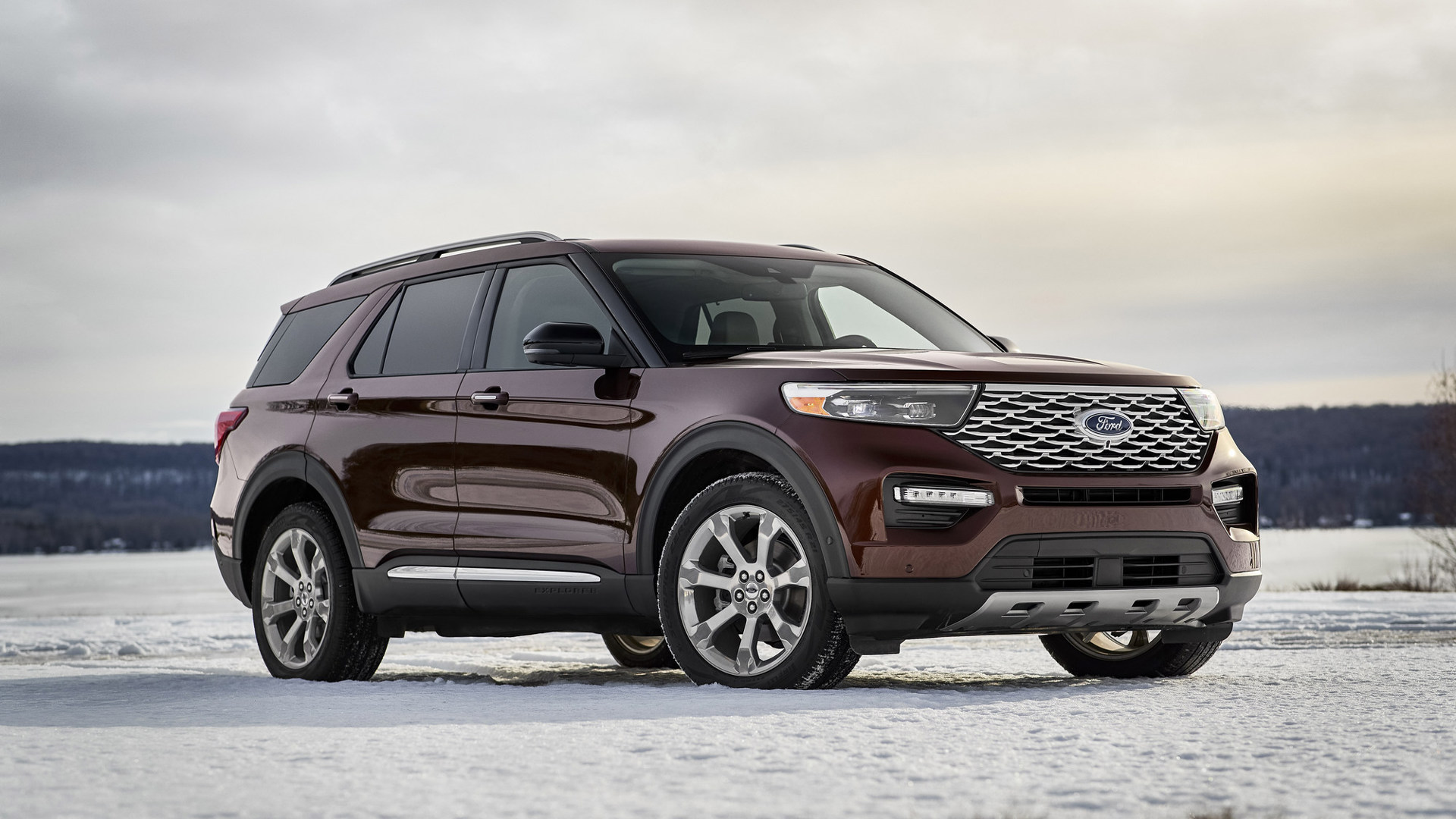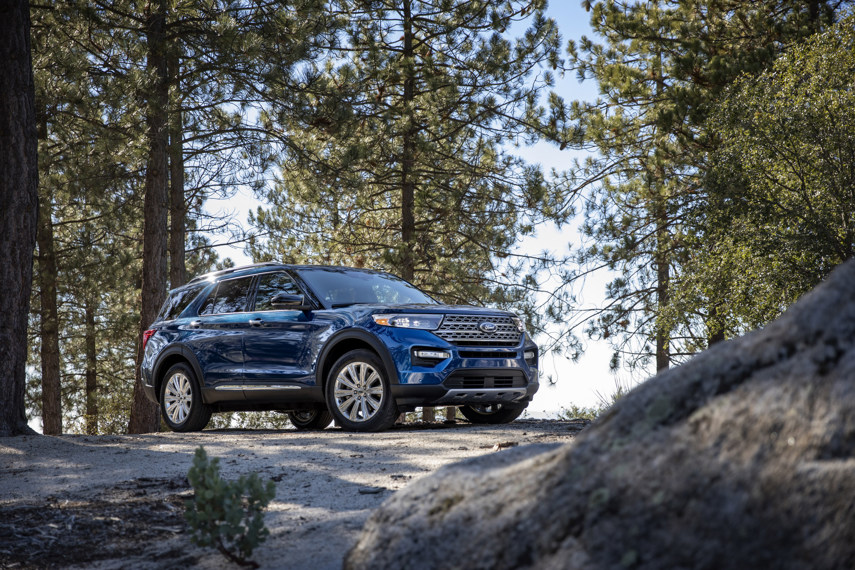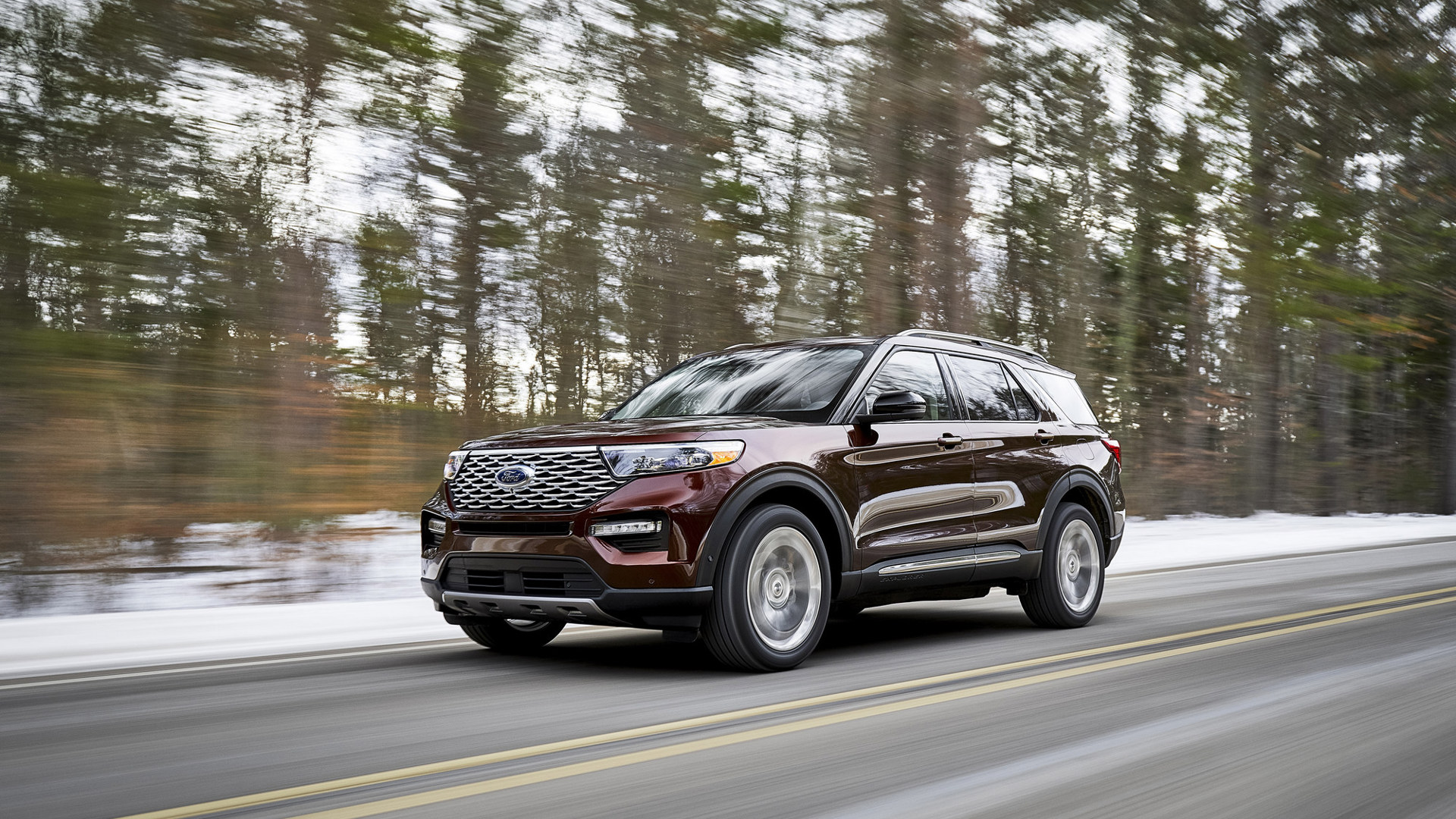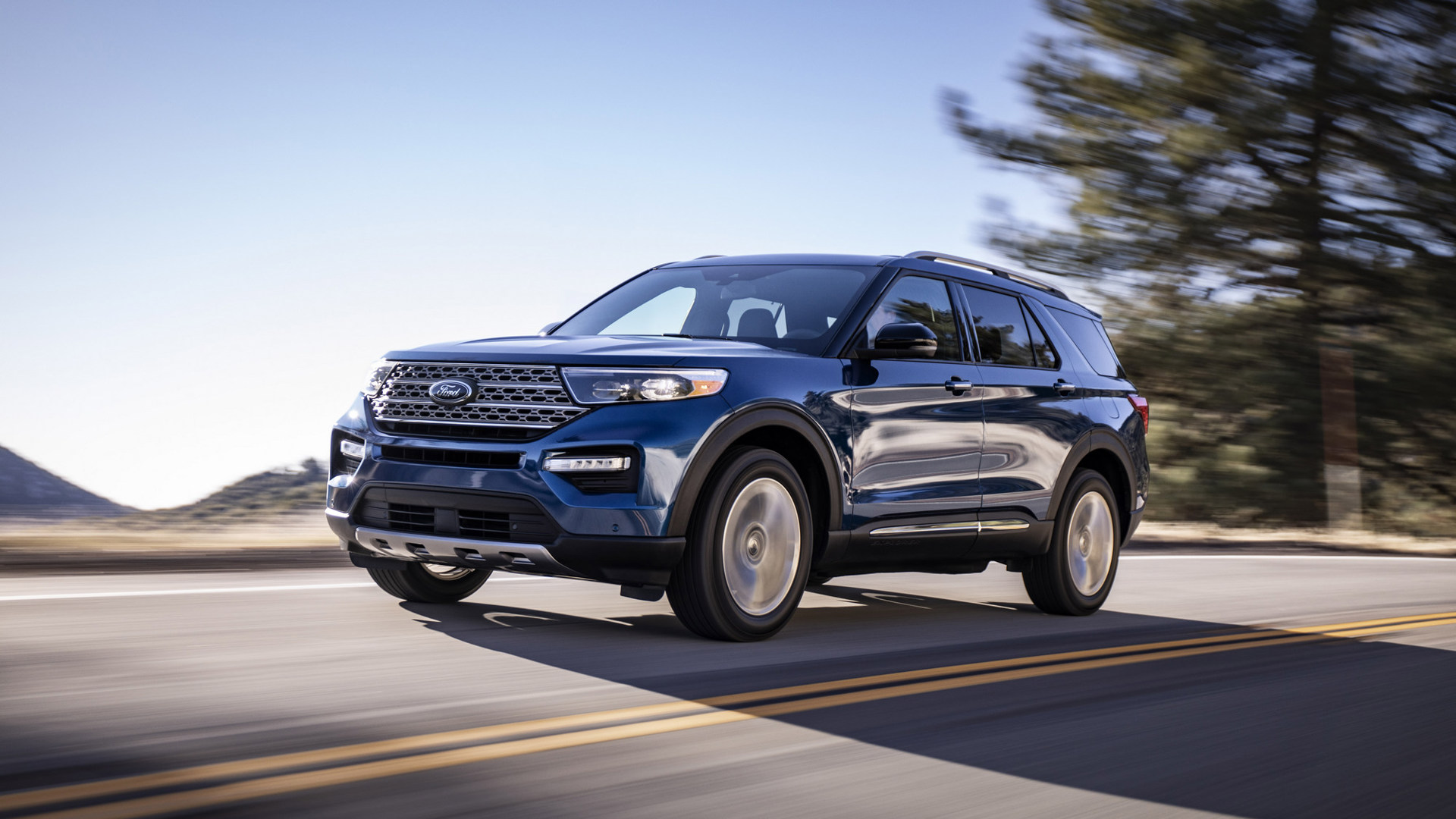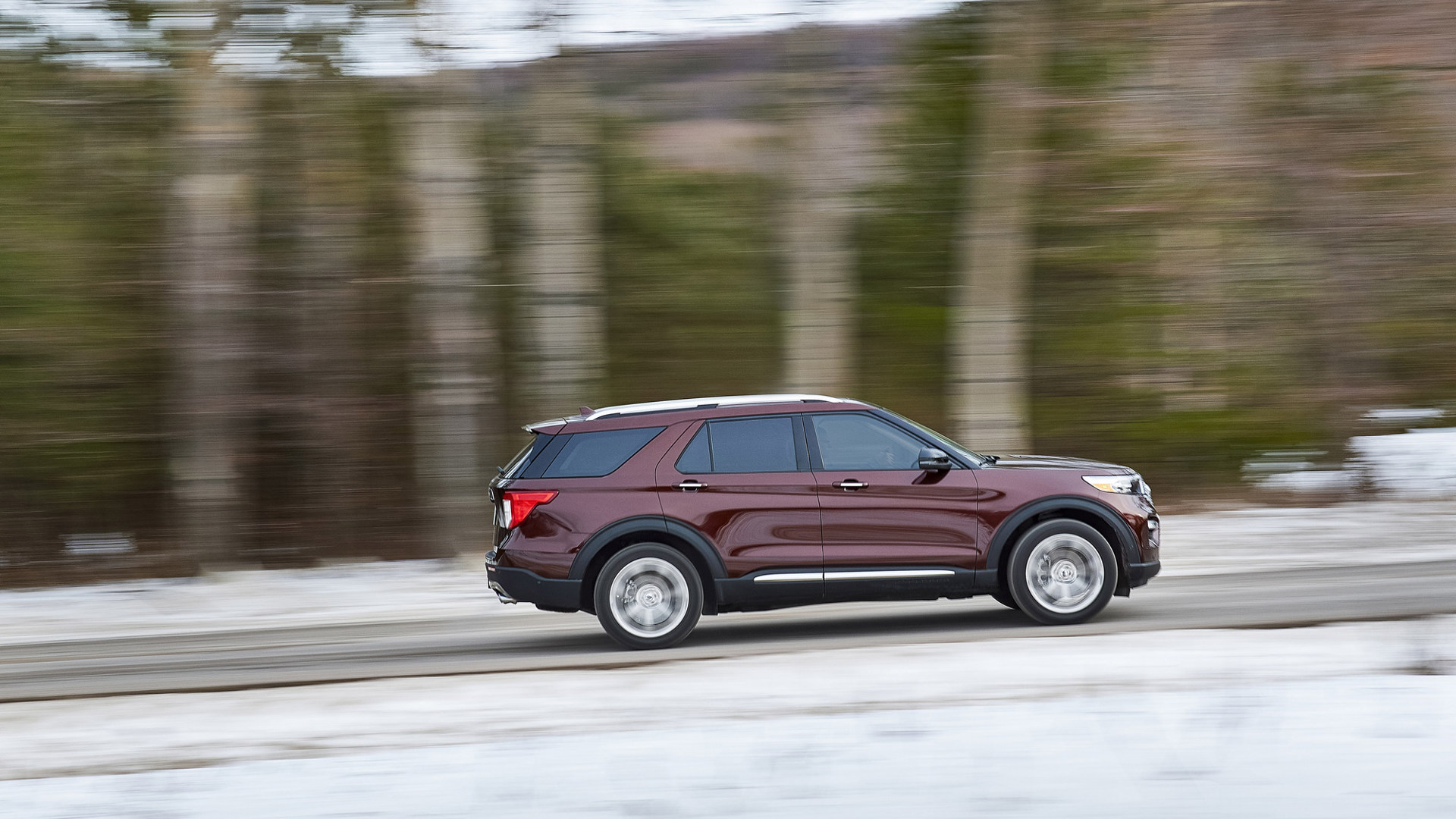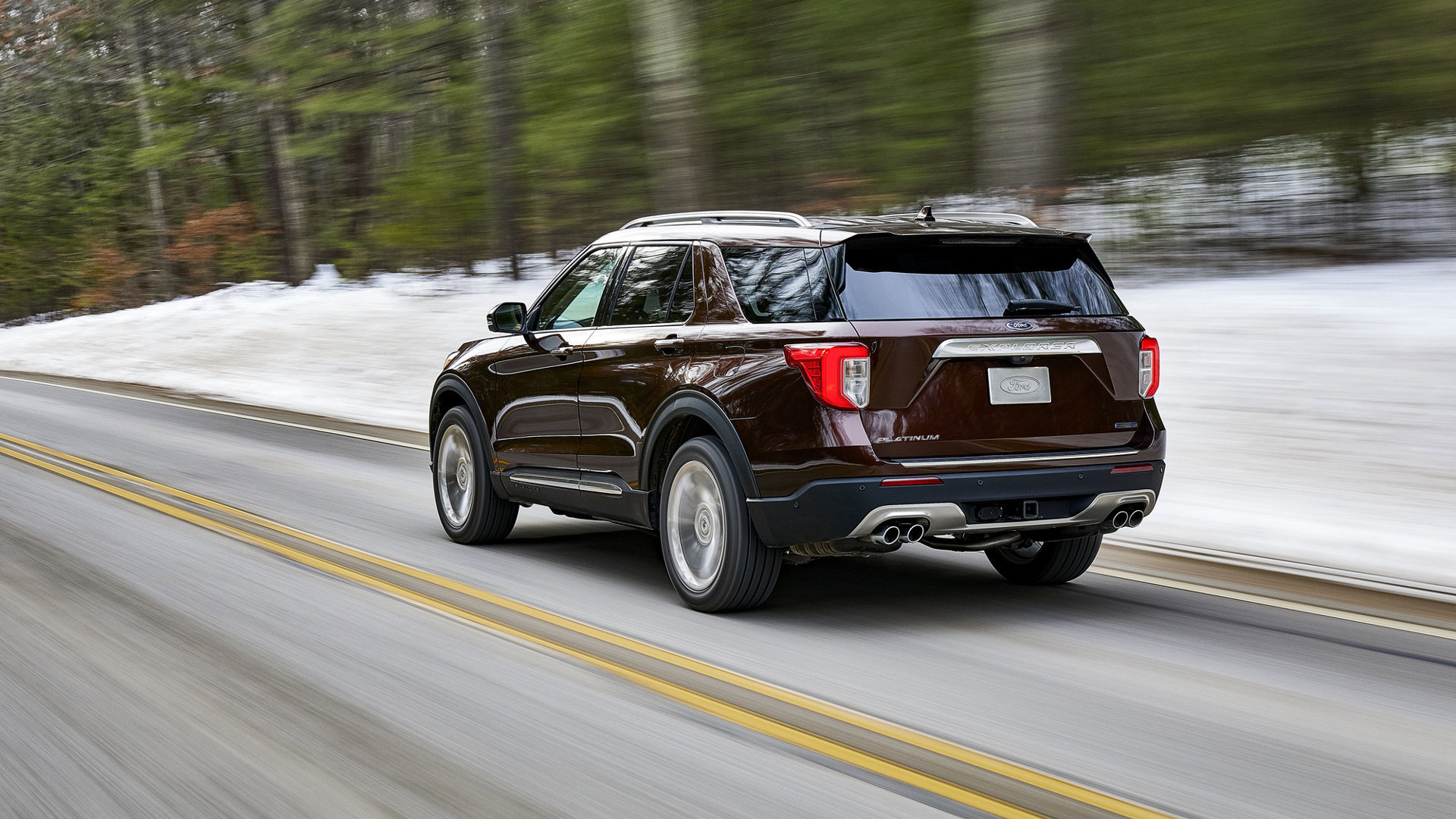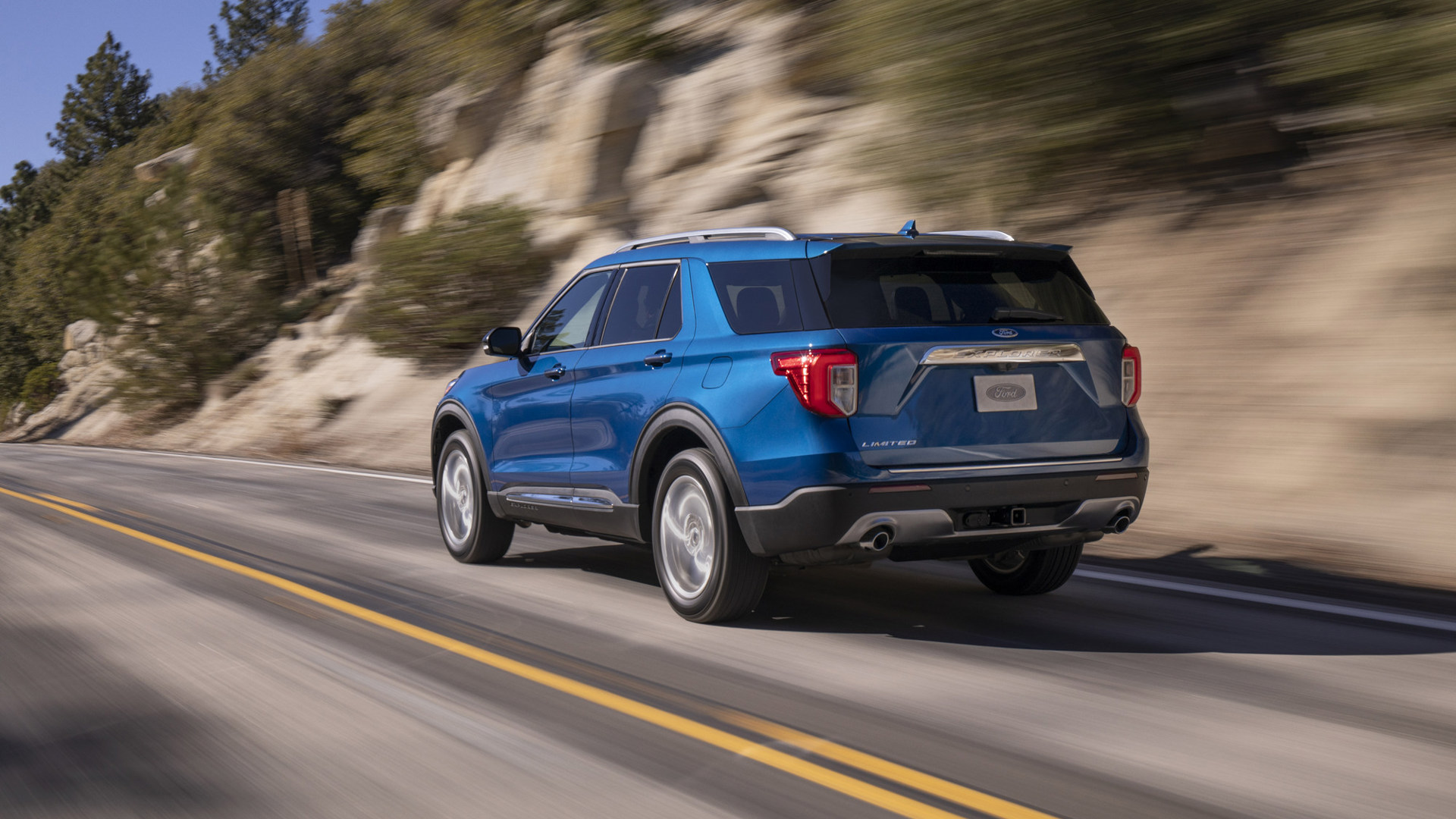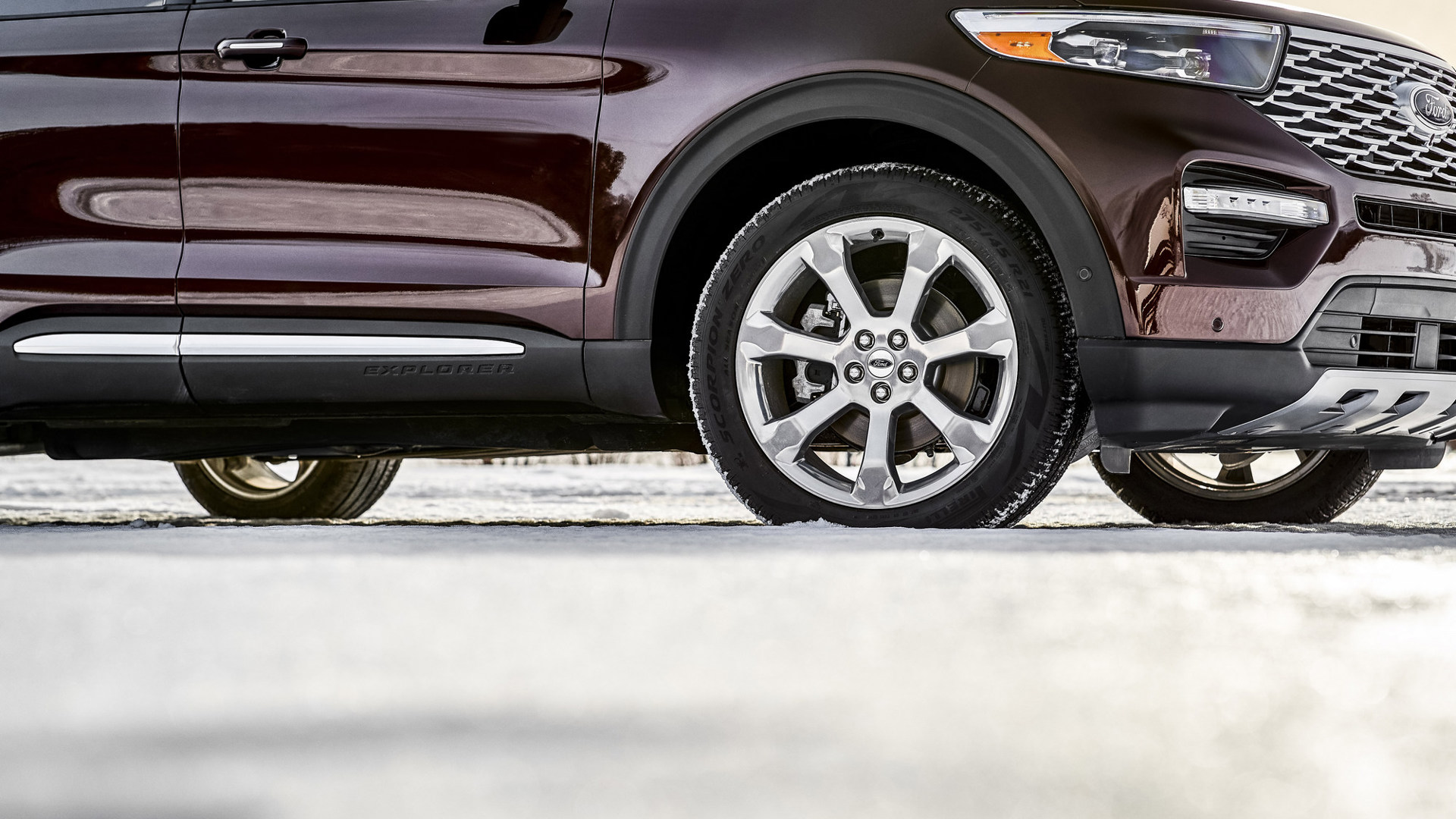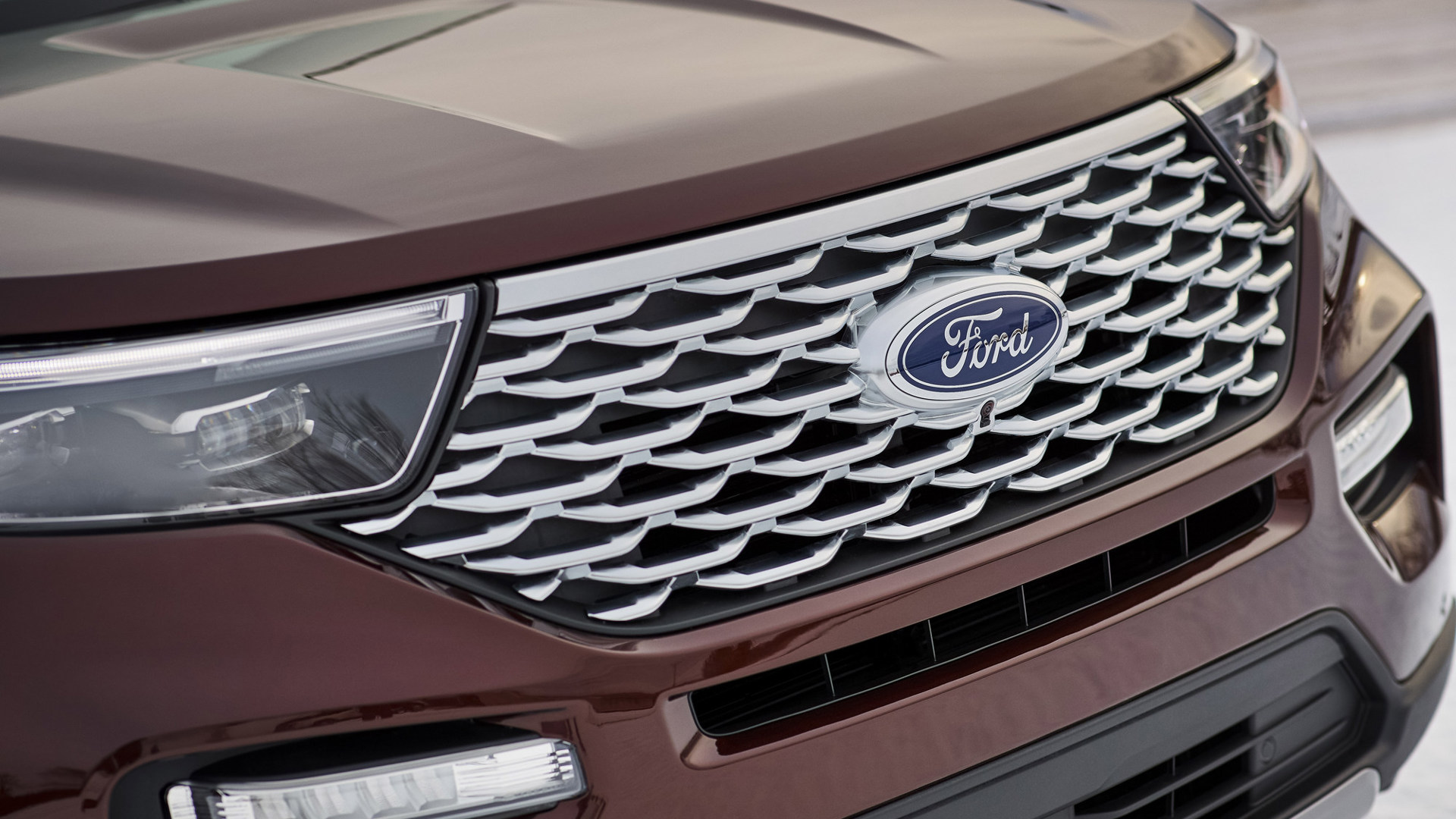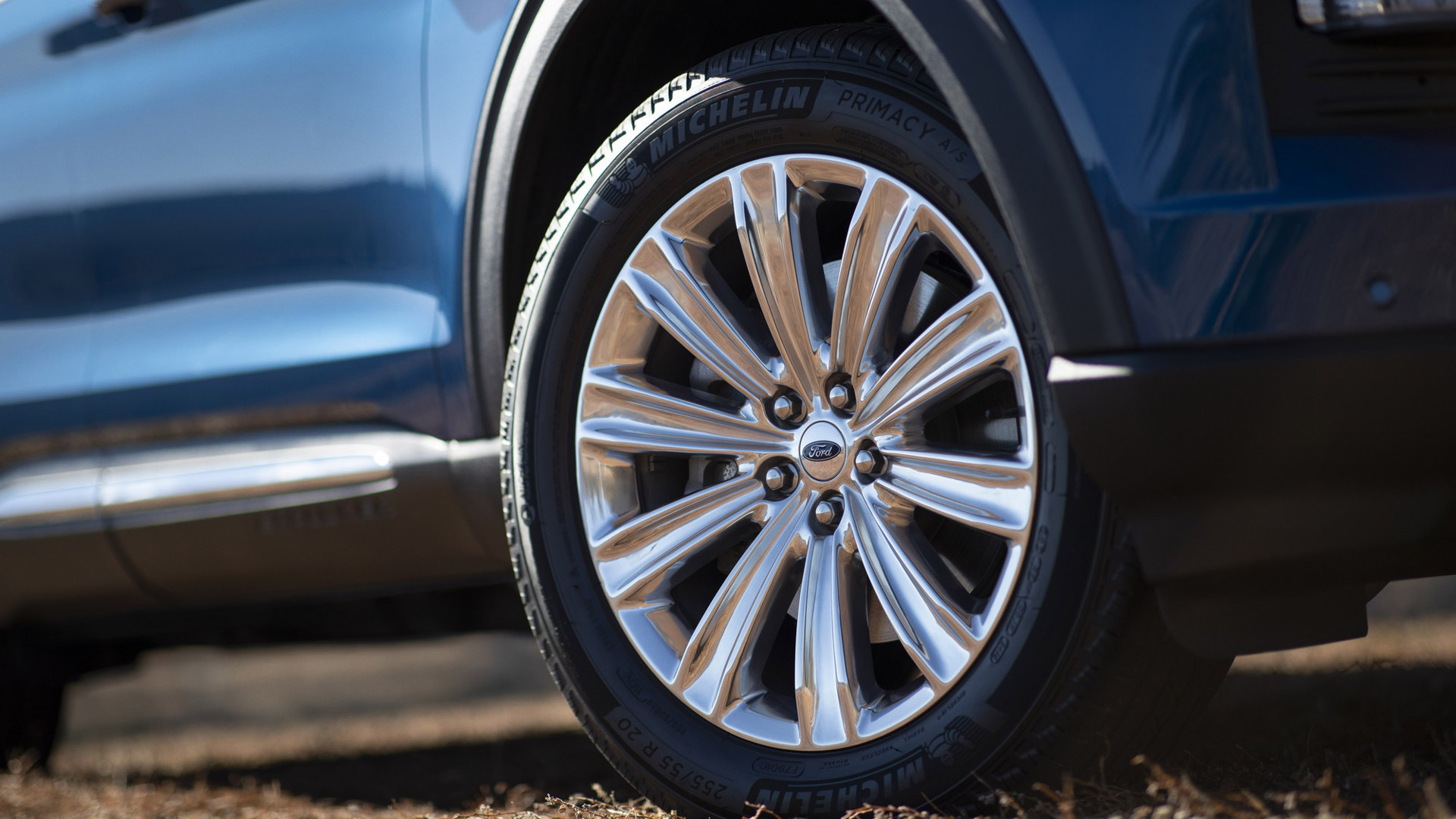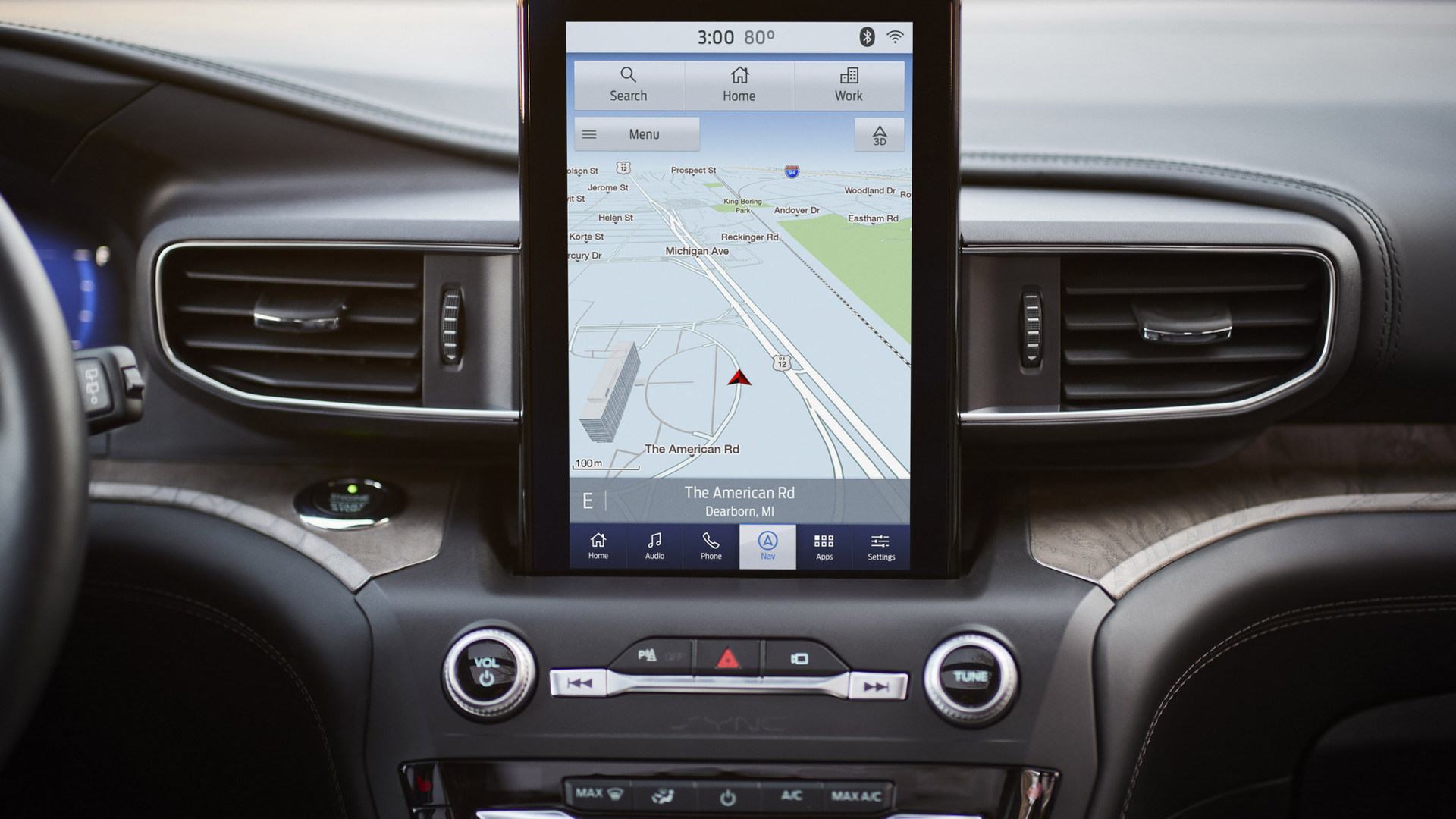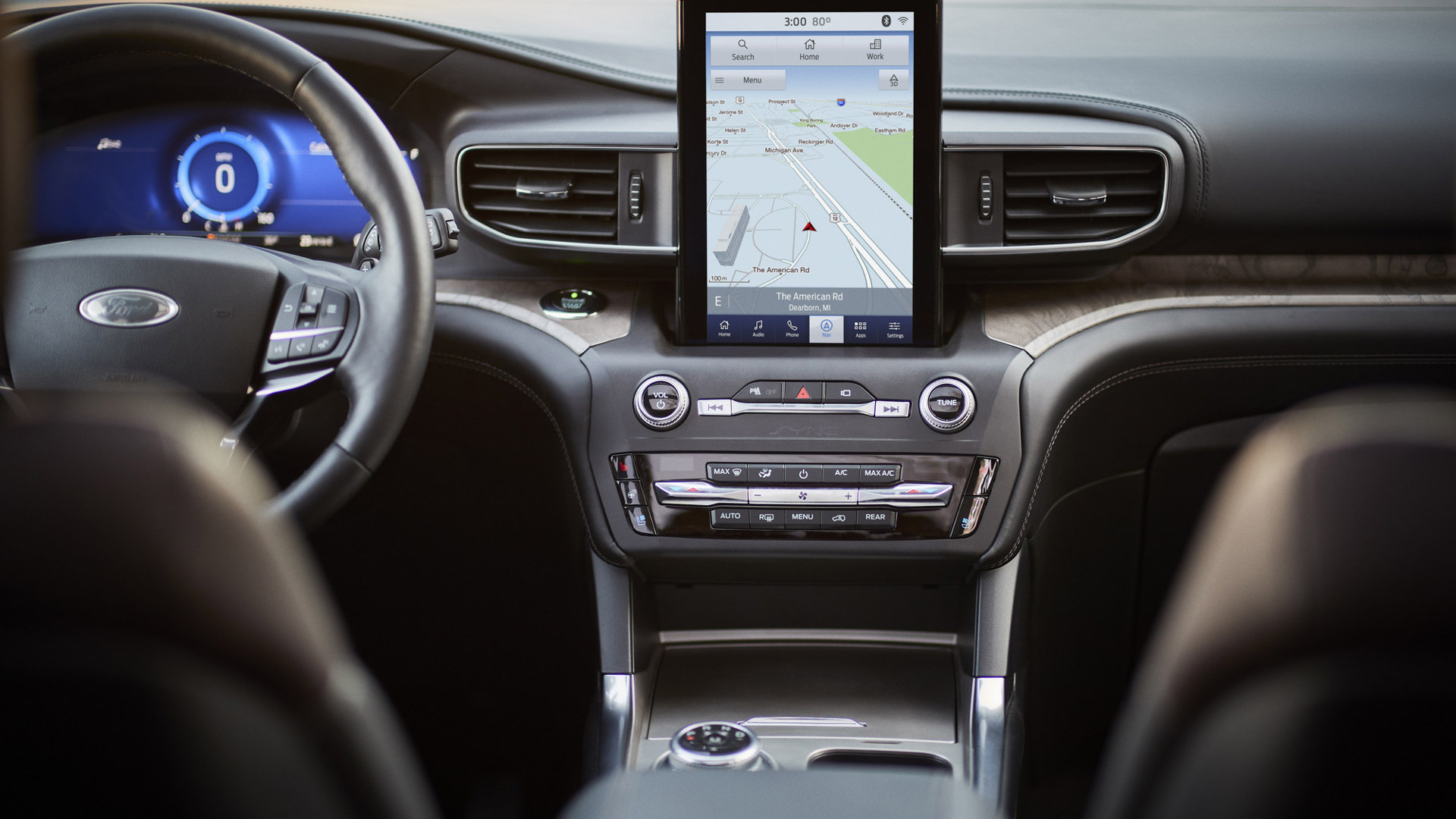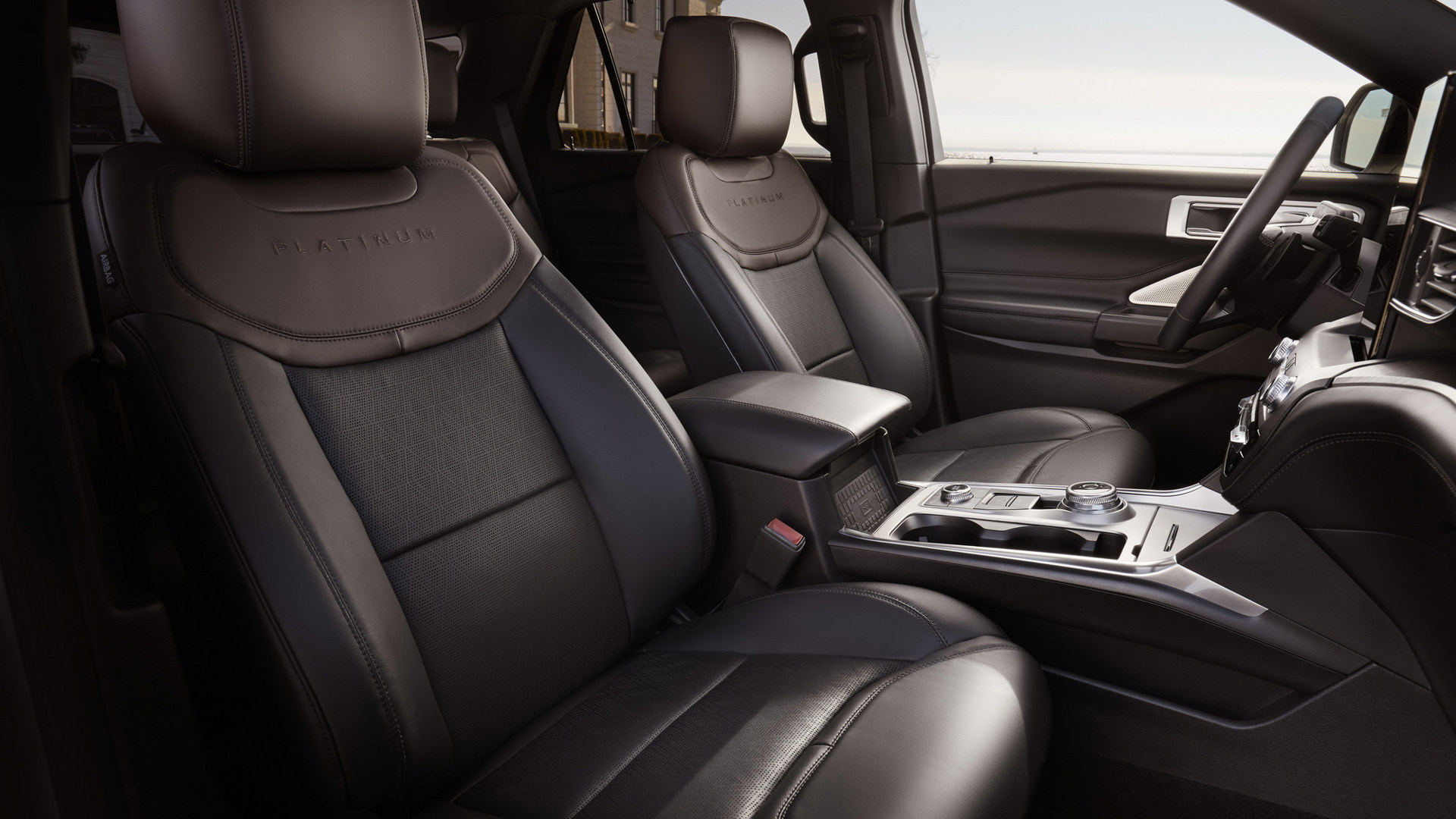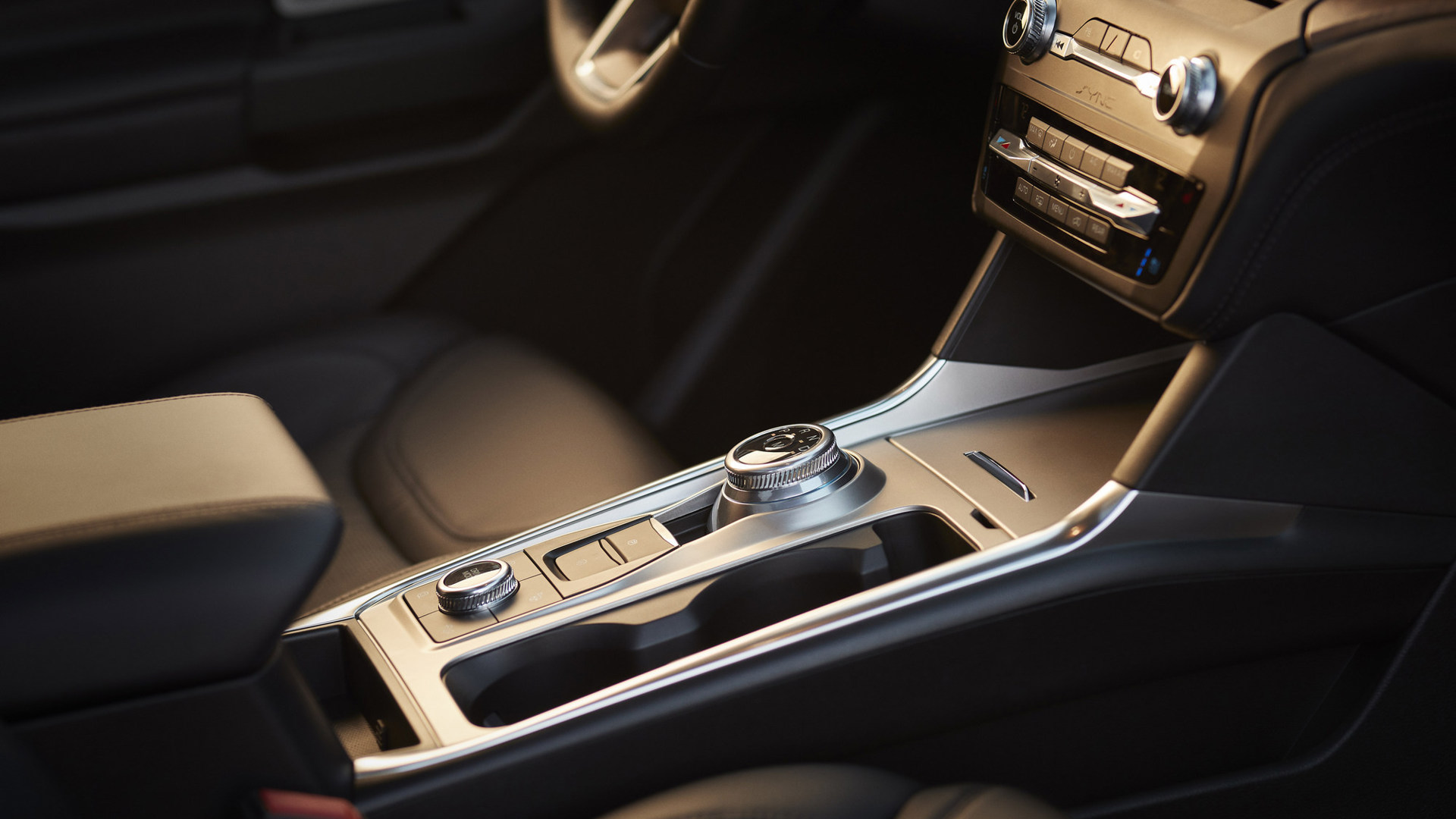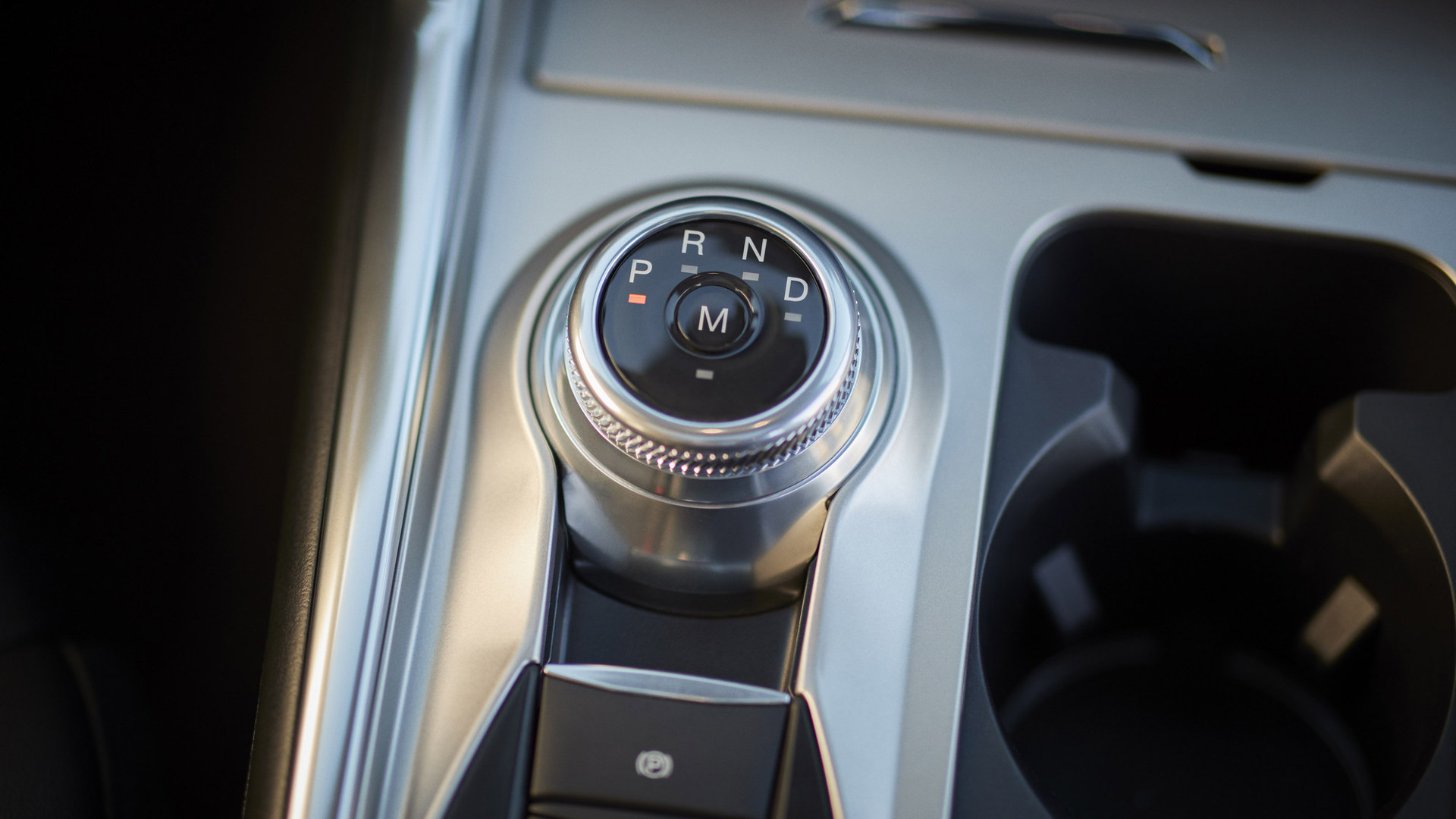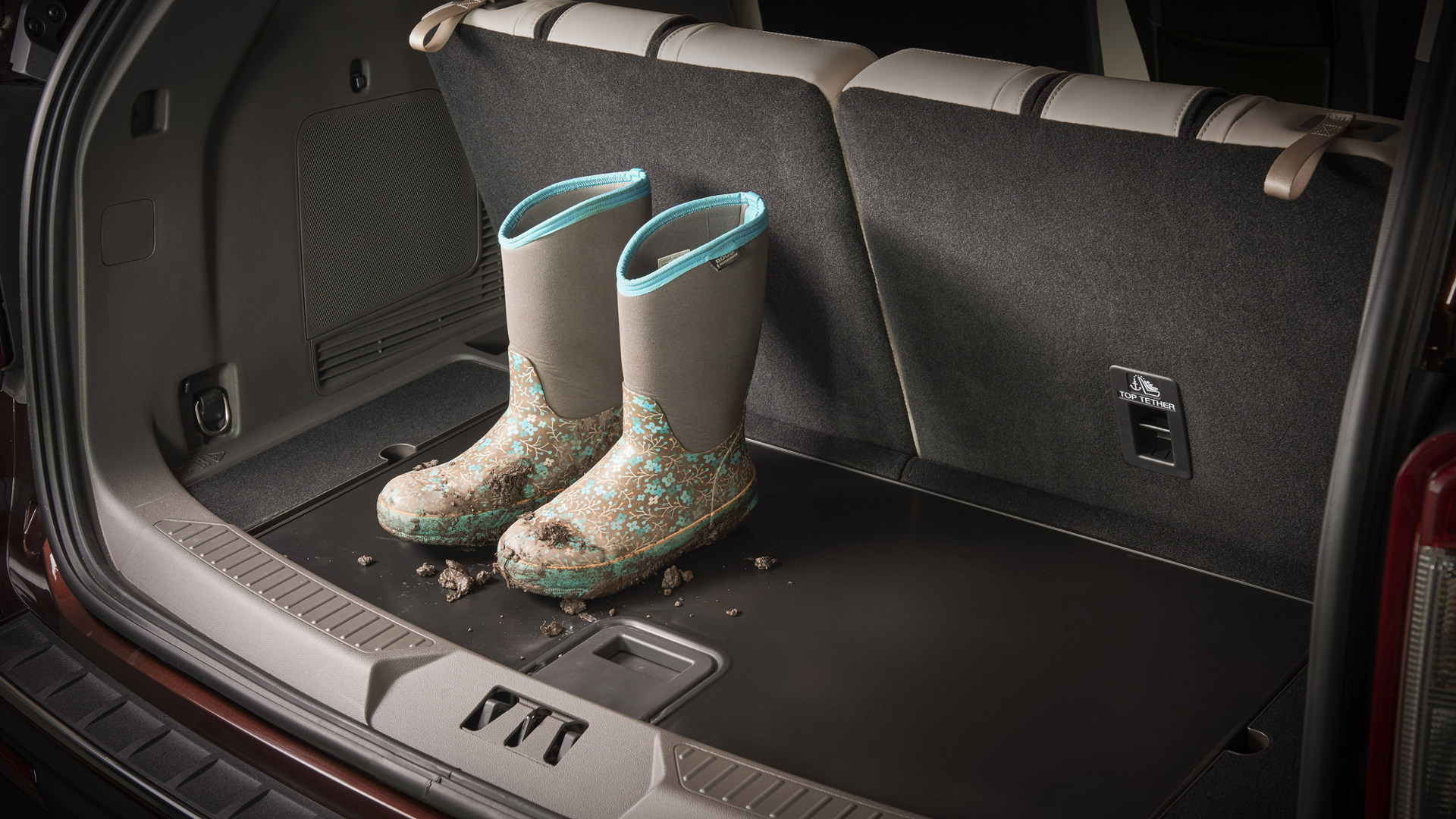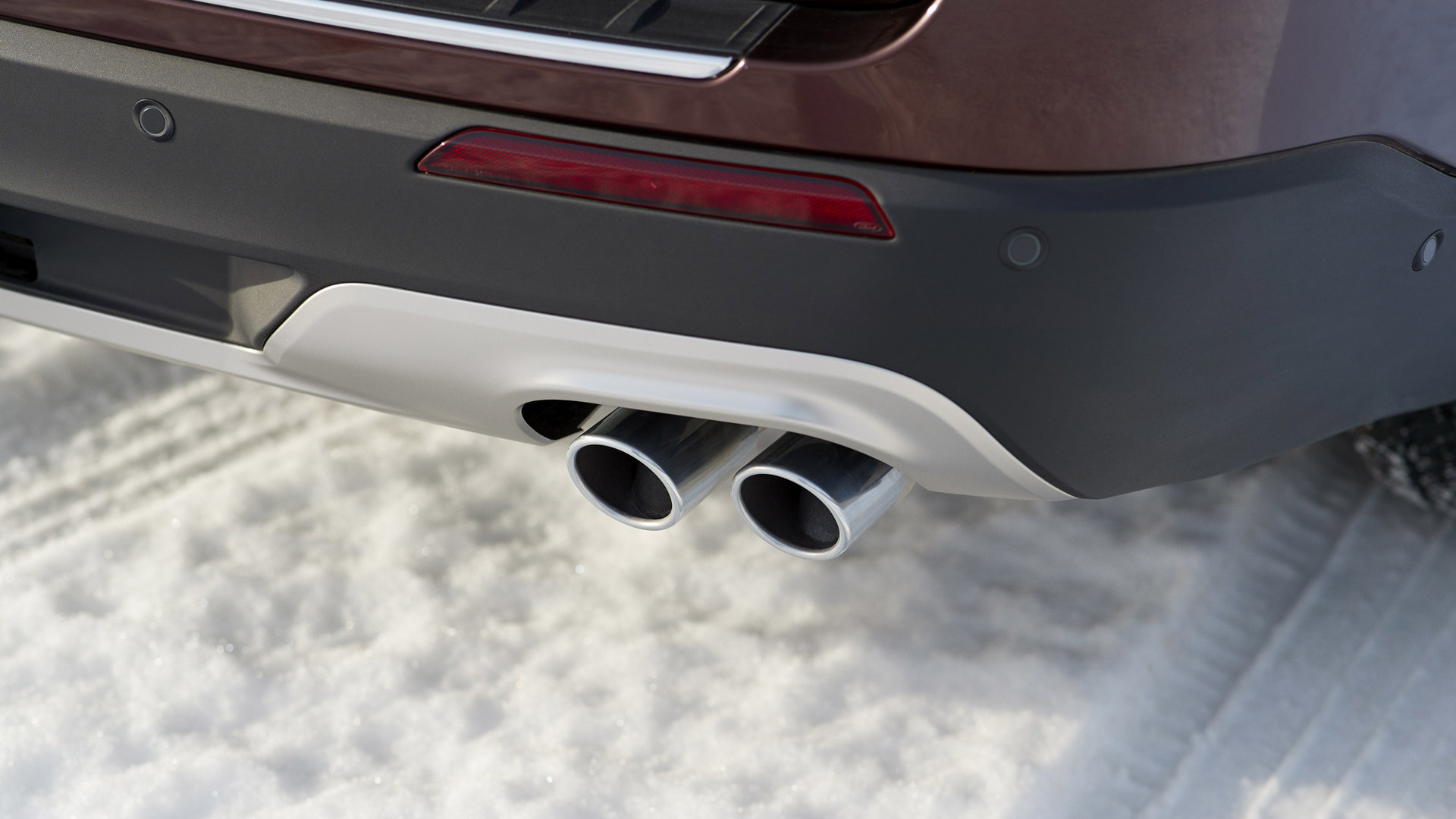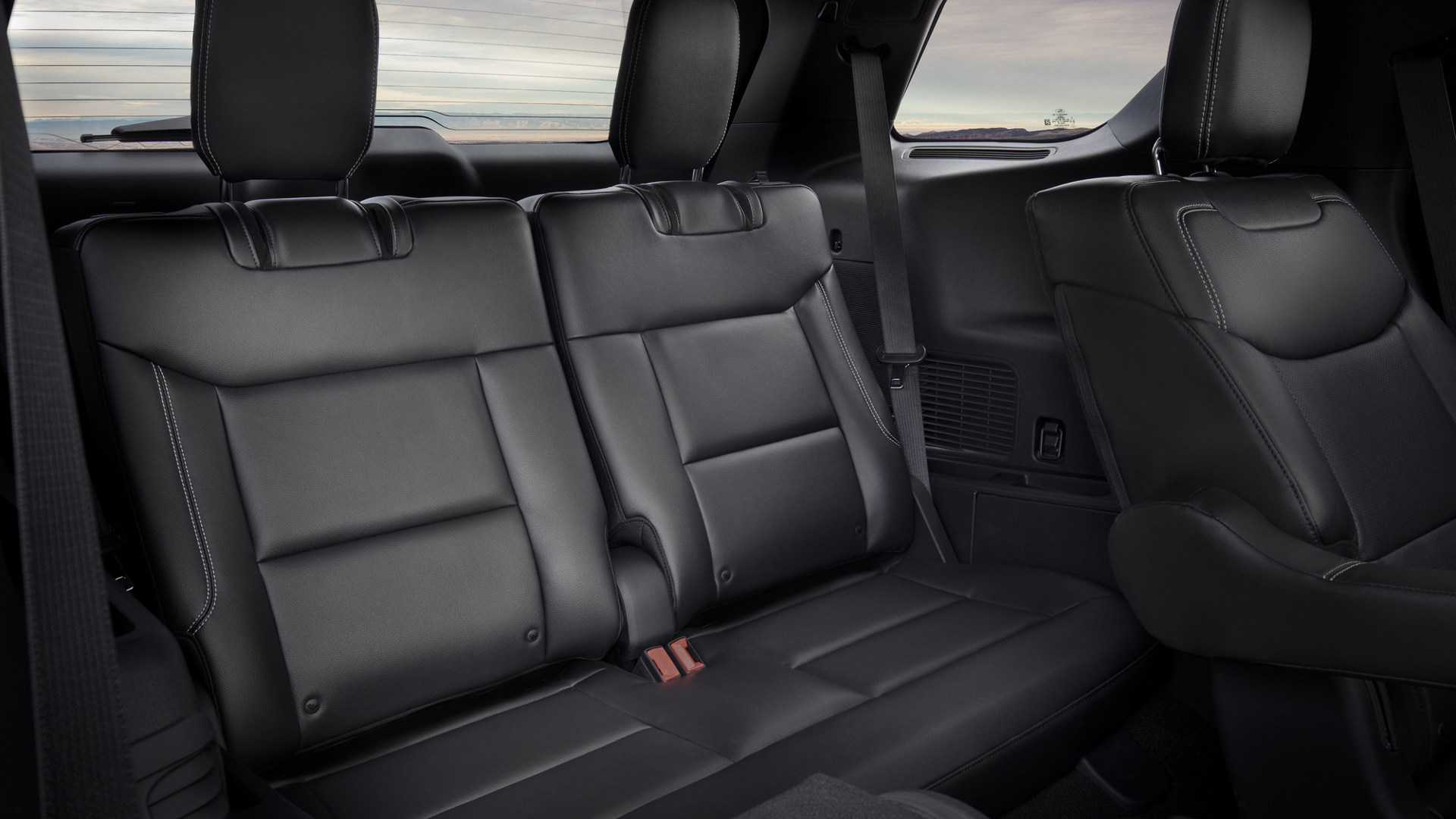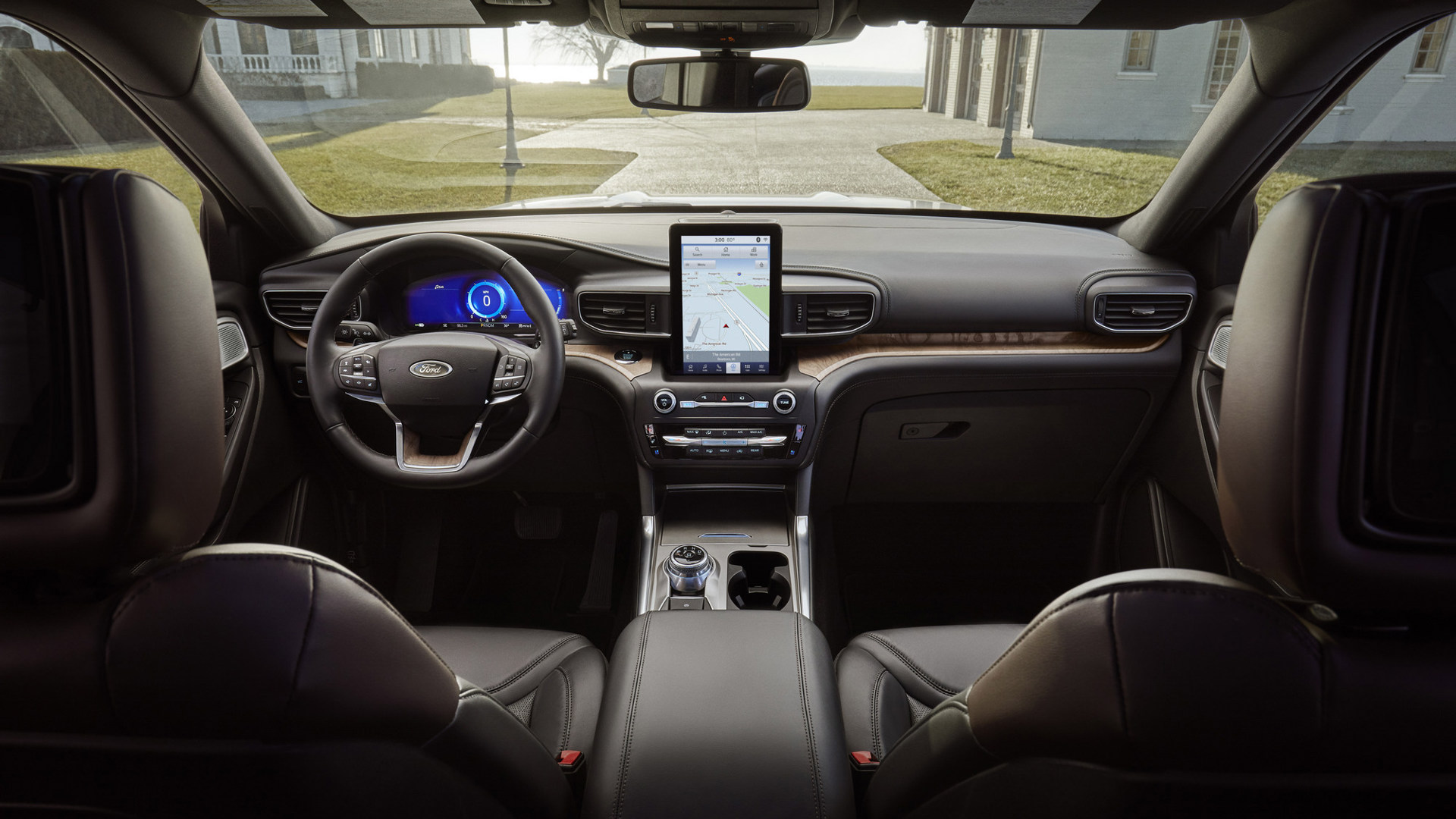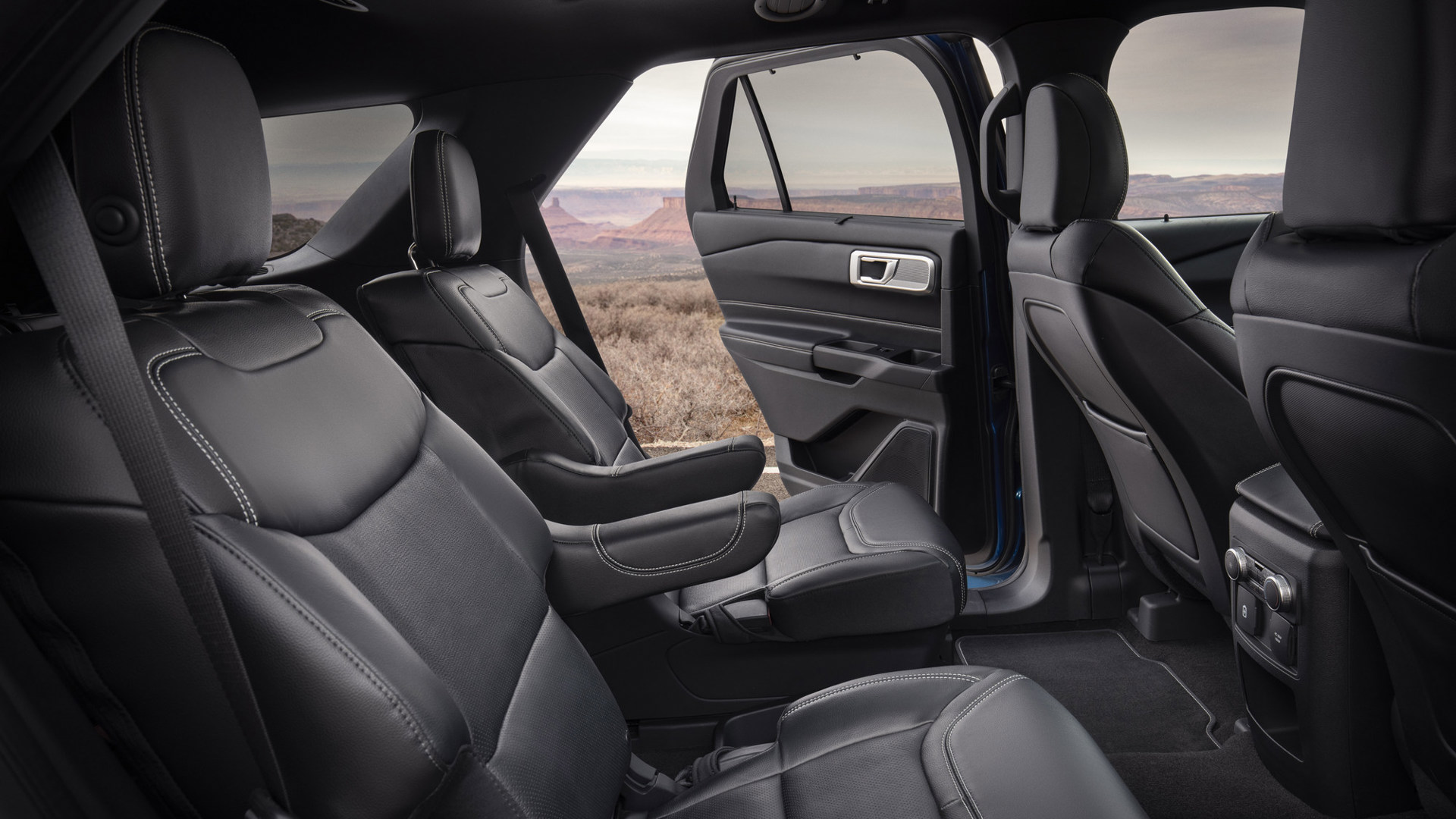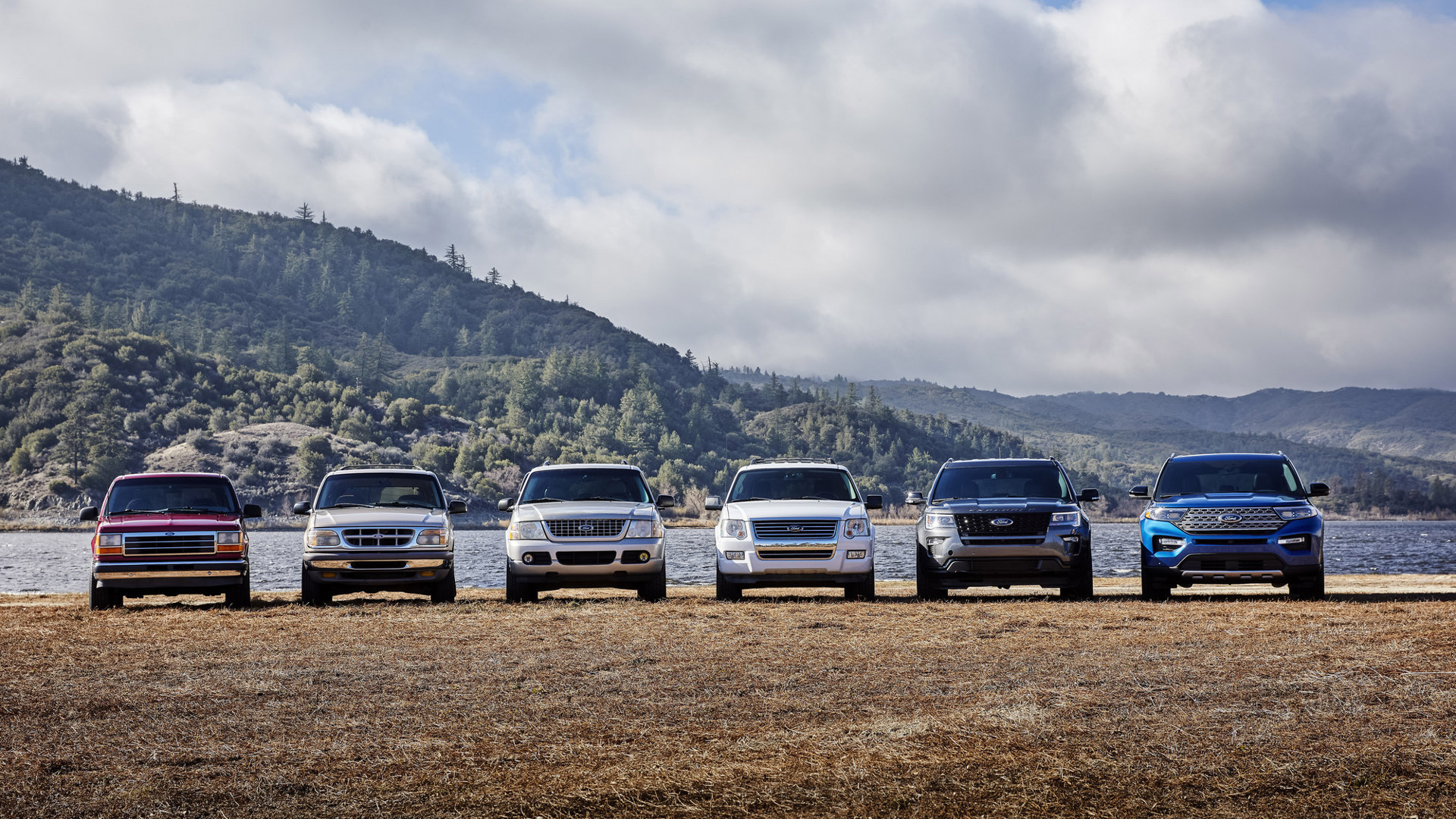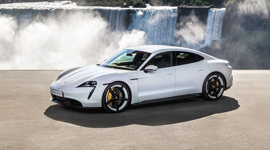Earlier this week, Ford previewed the all-new Explorer by showing a picture of the Police version. But the automaker wasn't saying for sure that what we saw was, in fact, the new Explorer. Now they're showing us the real thing. This is the 2020 Ford Explorer. The sixth-generation of the SUV that helped make that segment a driveway staple, with more towing, more space, and more fuel efficiency. And a whole lot of new tech. There's also going to be an ST performance version.
To make it clear, this really is an all-new vehicle. It's built on a completely new platform for the three-row SUV. It's now riding on rear-drive biased underpinnings. The new dirty bits are one of five new flexible architectures the company will be using for its next generations of vehicles. And based on their picture of those new platforms, the Mustang is going to be on the same bones as this big SUV.
While enthusiasts appreciate rear-drive for the tire-smoking handling benefits that usually accompany it, Ford is saying that there's more to it when it comes to this family hauler. Especially when all-wheel drive will be standard on Canadian-bound vehicles. Rear-drive helped give designers the flexibility to give it a better stance and a more athletic look. It gave engineers the ability to add towing capacity, and it added more space for interior occupants.
Powertrains will include a new hybrid model. There's a 2.3L four-cylinder EcoBoost engine with a 10-speed automatic that's been reworked to produce 300 hp and 310 lb-ft. That's 20 hp more than before. There's also a 3.0L EcoBoost V6 that puts out 365 hp and 380 lb-ft of torque. That matches the 3.5L V6 from the previous generation for horsepower, and gives it 30 lb-ft more torque, though Ford points out that's on 93 octane gas. The new platform and powertrains boost max towing to 2,545 kg, up about 270 kg from the previous crossover. More notably, even the 2.3L engine can tow up to 2,409 kg, nearly double the old base engine.
New tech features include Active Park Assist 2.0. It will parallel or perpendicular park without the driver needing to touch even the brake pedal. It will have new adaptive cruise control that will read speed signs and adjust to changing limits. The lane centering feature goes one step beyond just centering, and will automatically move to one edge of the lane if there's a large vehicle taking up the whole lane on the other side.
Ford has added blind spot monitoring that increases the monitored area if there is a trailer attached. There is also a new built-in lens cleaner for the back-up camera.
Inside, the driver will be staring at the available 12.3-inch digital dash cluster, that uses 3D animated graphics and different display modes depending on which of the seven drive modes are selected. An 8.0-inch touchscreen for the Sync 3 infotainment system is standard, with a 10.1-inch portrait orientation screen available. Sync 3 comes with Apple CarPlay and Android Auto connectivity and there is an available 980-watt, 14-speaker B&O audio system.
Trims on offer will include XLT, Limited, Limited Hybrid, and Platinum. New to the Explorer will be an ST trim. That makes it Ford's second SUV to get the ST treatment.
The Blue Oval isn't giving out all the details of the new Explorer tonight. They're saving some for the Detroit auto show next week. As far as when you can expect the Explorer to arrive at dealers, that's set for this fall.
